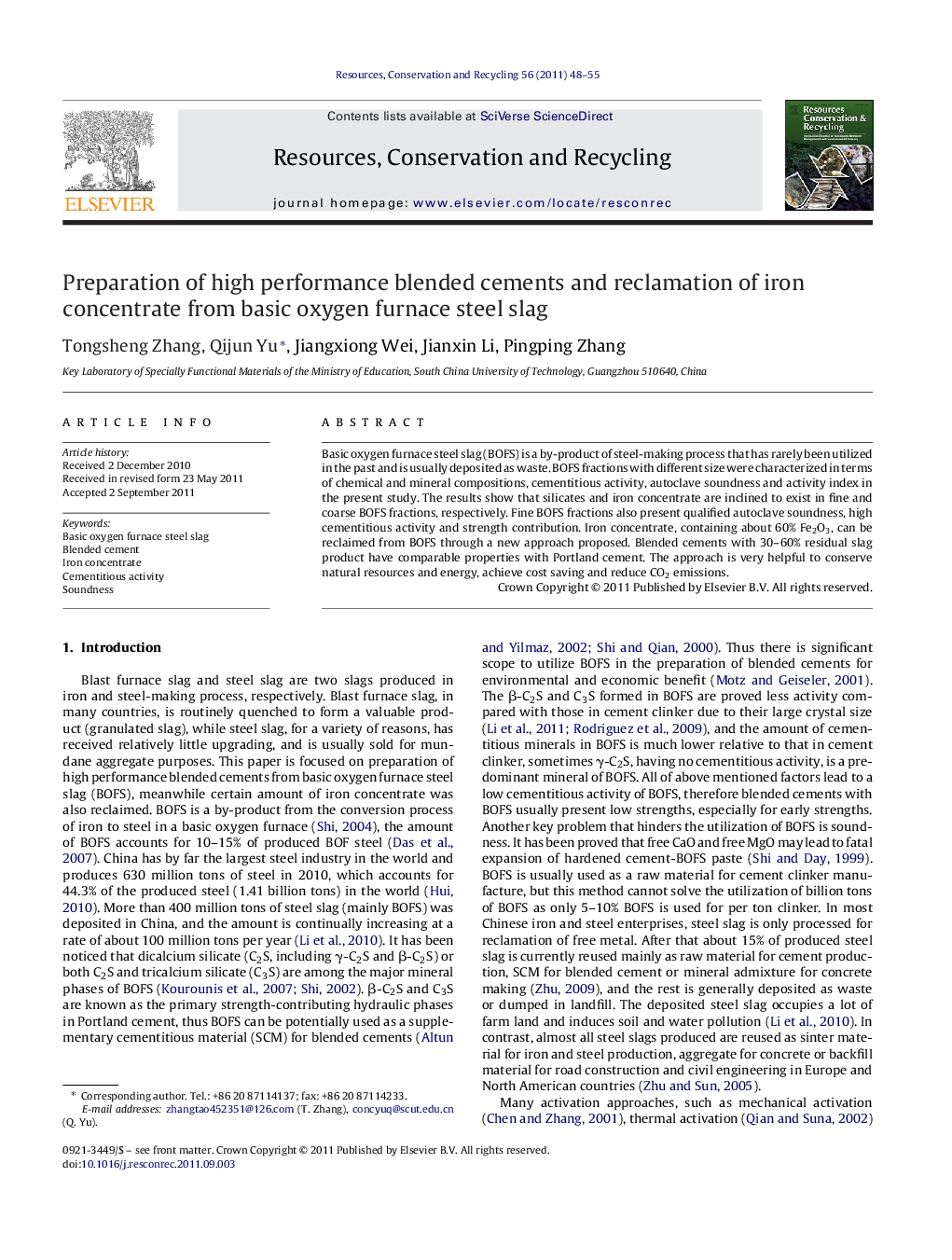| Article ID | Journal | Published Year | Pages | File Type |
|---|---|---|---|---|
| 1063341 | Resources, Conservation and Recycling | 2011 | 8 Pages |
Basic oxygen furnace steel slag (BOFS) is a by-product of steel-making process that has rarely been utilized in the past and is usually deposited as waste. BOFS fractions with different size were characterized in terms of chemical and mineral compositions, cementitious activity, autoclave soundness and activity index in the present study. The results show that silicates and iron concentrate are inclined to exist in fine and coarse BOFS fractions, respectively. Fine BOFS fractions also present qualified autoclave soundness, high cementitious activity and strength contribution. Iron concentrate, containing about 60% Fe2O3, can be reclaimed from BOFS through a new approach proposed. Blended cements with 30–60% residual slag product have comparable properties with Portland cement. The approach is very helpful to conserve natural resources and energy, achieve cost saving and reduce CO2 emissions.
Graphical abstractBasic oxygen furnace steel slag (BOFS) has not yet been widely used as a cementitious material due to low cementitious activity and poor soundness. Through the approach proposed, BOFS was separated into iron concentrate (about 60% Fe2O3) and residual slag product (consisting mainly of hydraulically active silicates). Blended cements with 30–60% slag product have comparable properties with Portland cement. The approach is very helpful to conserve natural resources and energy, achieve cost saving and reduce CO2 emissions.Figure optionsDownload full-size imageDownload as PowerPoint slideHighlights► Silicates and ferrites are inclined to exist in fine and coarse BOFS fractions, respectively. ► Fine BOFS fractions present high cementitious activity and qualified autoclave soundness. ► Iron concentrate (about 60% Fe2O3) accounted for about 25% by mass of raw BOFS can be reclaimed. ► Blended cements with 30–60% residual slag product have comparable properties with Portland cement. ► The approach is helpful to conserve resources and energy, achieve cost saving and reduce CO2 emissions.
